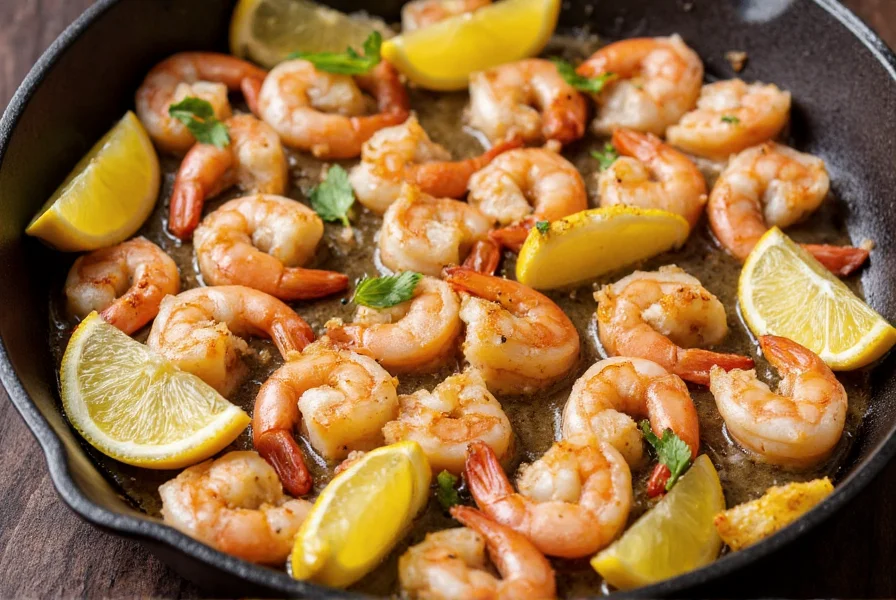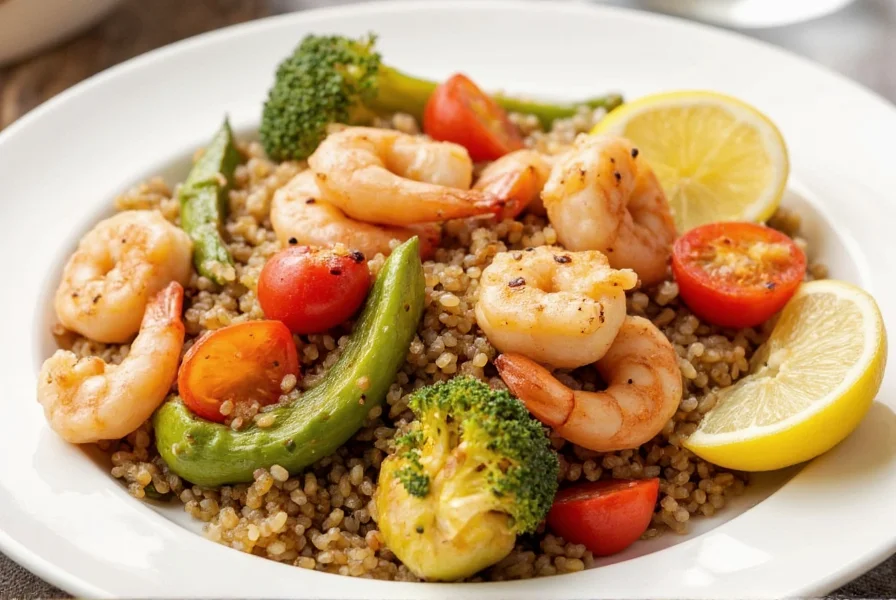Lemon and pepper shrimp represents one of the most accessible yet impressive seafood preparations for home cooks. This vibrant dish combines the natural sweetness of shrimp with the bright acidity of lemon and the gentle heat of freshly cracked pepper. Unlike many seafood recipes that require specialized techniques, this preparation method works equally well for novice and experienced cooks, making it ideal for weeknight dinners or special occasions.
When executed properly, lemon and pepper shrimp should feature plump, juicy shrimp with a delicate char on the exterior and a firm yet tender interior. The citrus component should enhance rather than overwhelm the natural flavor of the seafood, while the pepper provides subtle warmth without excessive heat. This balance transforms simple ingredients into a restaurant-quality meal that consistently satisfies.
Essential Ingredients for Perfect Lemon Pepper Shrimp
The beauty of this dish lies in its simplicity, but ingredient quality directly impacts the final result. Here's what you'll need for four servings:
| Ingredient | Quantity | Preparation Notes |
|---|---|---|
| Large shrimp (31-40 count) | 1.5 lbs | Peeled and deveined, tails on or off based on preference |
| Fresh lemon | 1 large | Zest and juice separated |
| Freshly cracked black pepper | 1.5 tsp | Coarse grind preferred |
| Extra virgin olive oil | 2 tbsp | High quality for best flavor |
| Garlic | 3 cloves | Minced finely |
| Unsalted butter | 1 tbsp | For finishing sauce |
| Fresh parsley | 2 tbsp | Chopped for garnish |
Equipment Checklist
Having the right tools ensures consistent results:
- Heavy-bottomed skillet (cast iron or stainless steel preferred)
- Microplane zester for lemon zest
- Pepper mill for freshly cracked pepper
- Metal spatula for flipping shrimp
- Instant-read thermometer (optional but recommended)
Step-by-Step Cooking Instructions

Preparation Phase
- Dry the shrimp thoroughly using paper towels - this critical step ensures proper searing rather than steaming
- Mix seasoning in small bowl: lemon zest, 1 tsp cracked pepper, and a pinch of sea salt
- Prepare lemon by juicing and slicing remaining half for garnish
- Mince garlic finely to prevent burning during cooking
Cooking Process
- Heat skillet over medium-high heat until drop of water sizzles immediately (about 2 minutes)
- Add oil and swirl to coat pan surface evenly
- Season shrimp with half the lemon-pepper mixture, pressing gently to adhere
- Cook shrimp in single layer without crowding (work in batches if necessary) for 1.5-2 minutes per side until opaque and lightly golden
- Remove shrimp immediately when cooked to prevent overcooking - they should form a loose "C" shape
- Make sauce: Reduce heat to medium, add remaining oil, garlic, and lemon juice; cook 30 seconds until fragrant
- Finish by returning shrimp to pan with butter and remaining seasoning; toss to coat
Professional Cooking Techniques
Master these restaurant-level techniques for perfect lemon pepper shrimp every time:
- Shrimp selection matters: Choose wild-caught shrimp when possible for superior flavor and texture. Frozen shrimp often outperforms "fresh" supermarket shrimp that's been previously frozen.
- Temperature control: Maintain consistent medium-high heat - too hot causes burning, too low results in steamed rather than seared shrimp.
- Don't overcrowd the pan: Cook in batches if necessary to ensure proper searing. Overcrowding lowers pan temperature and creates steam.
- Timing precision: Shrimp cook extremely quickly - 1.5 minutes per side typically suffices. Overcooking transforms tender shrimp into rubbery bites.
- Lemon addition timing: Add juice after shrimp are removed from heat to preserve bright flavor without curdling.
Common Mistakes to Avoid
Even experienced cooks make these errors when preparing lemon and pepper shrimp:
- Using pre-cooked shrimp: Results in overcooked, tough texture. Always start with raw shrimp.
- Adding salt too early: Salt draws out moisture, preventing proper searing. Season just before cooking.
- Using bottled lemon juice: Lacks the bright, complex flavor of fresh lemons essential to this dish.
- Stirring too frequently: Prevents proper sear formation. Let shrimp sit undisturbed for full 1.5 minutes before flipping.
- Serving immediately off heat: Residual cooking continues - remove from pan when 80% done to achieve perfect doneness.
Serving Suggestions and Pairings
Lemon pepper shrimp's versatility makes it suitable for various presentations:
- Over grains: Serve atop quinoa, rice pilaf, or orzo for a complete meal
- With vegetables: Pair with roasted asparagus, sautéed spinach, or grilled zucchini
- As an appetizer: Skewer with lemon wedges for elegant presentation
- In salads: Add to mixed greens with avocado and citrus vinaigrette
- With pasta: Toss with angel hair pasta and additional lemon sauce
Variations for Dietary Needs
Adapt this basic recipe for different preferences:
- Dairy-free version: Substitute olive oil for butter in finishing sauce
- Extra spicy option: Add red pepper flakes with garlic for heat dimension
- Herb variations: Substitute parsley with cilantro, dill, or basil based on preference
- Garlic-free preparation: Omit garlic and increase lemon zest for cleaner citrus profile
- Grilled alternative: Skewer shrimp and grill over medium heat for smoky flavor
Storage and Reheating Guidelines
While best served fresh, proper storage maintains quality:
- Refrigeration: Store in airtight container for up to 2 days
- Reheating: Warm gently in skillet over low heat with teaspoon of water to create steam
- Avoid microwaving: Causes uneven heating and rubbery texture
- Do not freeze cooked shrimp: Freezing after cooking severely degrades texture

Frequently Asked Questions
How can I tell when lemon pepper shrimp is perfectly cooked?
Perfectly cooked shrimp turns opaque with a light pink color and forms a loose "C" shape. The internal temperature should reach 120°F (49°C), as residual heat will continue cooking after removal from pan. Overcooked shrimp becomes tough and forms a tight "O" shape. Timing varies by size but typically requires 1.5-2 minutes per side in a properly preheated skillet.
Can I use frozen shrimp for lemon pepper shrimp recipe?
Yes, frozen shrimp works well for lemon pepper shrimp when properly thawed. Place frozen shrimp in a colander and run under cold water for 5-10 minutes until flexible. Pat thoroughly dry with paper towels before seasoning. Avoid thawing at room temperature or in warm water, which degrades texture. Frozen shrimp often outperforms supermarket "fresh" shrimp that's been previously frozen.
Why does my lemon pepper shrimp turn out rubbery?
Rubbery texture almost always results from overcooking. Shrimp cooks extremely quickly - typically 3-4 minutes total. Remove shrimp from heat when 80% opaque, as residual heat continues cooking. Other factors include using previously frozen shrimp that wasn't properly thawed, overcrowding the pan (causing steaming instead of searing), or using excessive heat that burns the exterior before interior cooks properly.
What's the best type of pepper to use for lemon pepper shrimp?
Freshly cracked black pepper delivers the best flavor for lemon pepper shrimp. Use a pepper mill with coarse setting for visible pepper flakes that provide texture and bursts of flavor. Avoid pre-ground pepper, which loses volatile oils and potency. For more complex flavor, try a blend of black and white pepper, or add a pinch of Tellicherry pepper for floral notes that complement the lemon.
How can I prevent my shrimp from sticking to the pan?
Prevent sticking by ensuring your skillet is properly preheated before adding oil, then heating the oil until shimmering but not smoking. Pat shrimp completely dry with paper towels before seasoning - moisture creates steam that prevents proper searing. Use a metal spatula rather than silicone for easier release. Avoid moving shrimp during the first 1.5 minutes of cooking to allow proper sear formation. Cast iron or stainless steel pans work better than non-stick for achieving the ideal sear.











 浙公网安备
33010002000092号
浙公网安备
33010002000092号 浙B2-20120091-4
浙B2-20120091-4